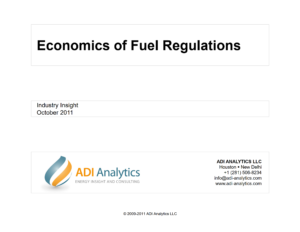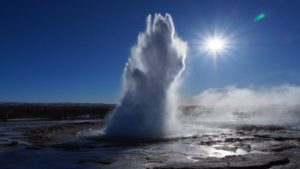Description
Report #3: Innovation in Geothermal Energy: Perspectives from Patent Analytics
Published in December 2013. 94 pages. 72 exhibits.
Task 3 has developed a detailed landscape of patents in geothermal energy as well as EGS to support our technology assessment work. Key findings discussed in this report include the following:
- This report seeks to understand the state of the art of geothermal energy technology through the lens of patent analytics. Specifically, there were three major objectives: (1) understanding the rate of patenting in geothermal energy, (2) drawing the geothermal patent landscape across the industry value chain, and (3) using patent analytics to focus attention on technology gaps, the pace of innovation, and corresponding policy issues
- A structured methodology was used to conduct this study and it began by building a database of approximately 6,000 patents on geothermal energy. The resulting patent records were manually evaluated, categorized, and mapped across the geothermal industry value chain, which is comprised of exploration, drilling, completions, reservoir stimulation, and power plants. Finally, a range of analytics was conducted on this dataset to develop insights on the state of the art of geothermal energy technology, the level and pace of innovation in different parts of the geothermal industry value chain, and opportunities for further improvement.
- Patenting in geothermal energy is well behind that in solar and wind energy, but the number of patents is growing slowly from its small base. Drilling and power plants dominate patenting, each accounting for nearly a third of the total patent portfolio, followed by reservoir stimulations, well completions, and exploration.
- North America, Europe, and Asia are the leading jurisdictions for geothermal patent filings. Filings in Asia have only grown in the past decade, but at such a pace fast that patents in the 2000s have exceeded those in Europe and North America for the same period.
- There are over 500 companies who own more than 71% of the total geothermal patent portfolio, followed by independent inventors who own almost a quarter of all patents. The top ten assignees account for over 22% of the global geothermal portfolio. Of the total set of patents assigned to companies, the top ten assignees account for more than 40%, while the top five assignees account for nearly 35%. Oilfield service companies such as Schlumberger, Baker Hughes, and Halliburton, along with operating leaders such as Chevron and Ormat, lead the list of top ten assignees.
- Exploration for geothermal resources is similar to that of oil and gas, so that technologies used in the oil and gas industry, e.g., seismic imaging, subsurface temperature analysis, geochemical profiling, and electrical resistivity, are also the dominant technologies for exploration in the geothermal industry. Even so, patent data shows that the industry has converged on seismic imaging as the primary technology for geothermal exploration. Analytics on geothermal exploration patents suggest that most assignees seem to have patents of marginal technical and commercial value, and do not differentiate themselves. Despite the fact that several technologies score highly on innovation and commercial relevance, only a few are actually being rapidly commercialized.
- Drilling patents focus on equipment such as drill bits, heads, strings, and rigs. They also focus on measurement tools, drilling fluids and cementing materials, and the drilling process itself. The overall portfolio grew dramatically in the 2000s with most of the growth coming from drilling equipment and processes. Most patent portfolios fail to differentiate themselves on the basis of technical quality, and yet are widely patented. Oilfield service companies who work globally hold the majority of them. The most innovative and economically valuable technologies are for drill bits, which include diamond, polycrystalline diamond, and button-type inserts, in addition to new drilling methods, drilling fluids, and downhole tools. Such technologies are being developed rapidly, while other drilling technologies are limited either in technical quality, economic value, or speed of technological development.
- Based on patenting trends, well completions do not seem to be an area of strong RD&D interest. After a slow start, patenting picked up in the 1980s, but stagnated through the 2000s. There is little to differentiate most assignees, but well completion technologies such as organic and inorganic materials for mortars and cements, screens, and liners are perceived as being highly innovative with formidable economic values. A number of technologies, irrespective of perceived technical value, advanced rapidly in the market place. Technologies on the setting of casings, screens, and liners to filter subsoil were viewed as important innovations and were commercialized quickly.
- Over half of all patents on reservoir stimulation focused on treating techniques such as acidizing to clean and remove debris, and tools for Measurement While Drilling (MWD), which are typically used in telemetry. Patents on reservoir stimulation increased significantly in the 2000s, primarily driven by patents on telemetry. There are several innovative reservoir stimulation technologies, but most of them seem to have limited commercial and/or economic impact. In comparison, organic corrosion inhibitors are only incrementally innovative, yet have achieved widespread commercial impact.
- Power plant patents are dominated by hydrothermal applications followed by EGS. Patent filings grew significantly in the 2000s presumably driven by the renewed interest in energy technologies and innovation. Although U.S., Europe, and Japan led the list of top ten patent filing jurisdictions, Asian countries collectively accounted for the highest number of patent filings by region. Most assignees’ patent portfolios are not very different in terms of either quality or market coverage. However, there are a number of power plant technologies that are characterized by both high innovativeness and economic impacts, e.g., power generation using various working fluids, changes in working fluid phases, and turbo pumps. Finally, although power plant technologies vary widely in technical quality, a number of them are advancing rapidly reflecting their wide range of applications well beyond geothermal power.
- Patents data suggests that, in the past 20 years, geothermal well completions have advanced most in terms of technical influence and commercial relevance. The data also shows that technologies in exploration, drilling, and power plants seem to have made little progress. However, many of these, such as drilling and power plants, are mature technologies where dramatic improvements are typically difficult and perhaps unlikely.
- Another set of analytics suggests that geothermal patents on drilling and completions are not only innovative, but are also economically valuable. Completions patents on screens, liners, and filters are also highly valued in terms of both innovativeness and economic benefit.
- Patents on exploration, stimulation, and power plants rank high on only one of the two metrics of innovativeness and economic benefit. For example, stimulation patents on scale prevention, well cleaning, and fracture formation are all exceedingly innovative, but have limited economic impact.
- Finally, patent analytics indicate that most geothermal energy technologies are being developed and deployed slowly. There is no scarcity of geothermal technologies that rate highly on technological quality. However, the pace of their development and commercial deployment is slow.
- A number of technology gaps and innovation needs have been identified based on the patent research and analytics described in this report. An overarching finding across almost every segment of the geothermal value chain is the slow pace of technology commercialization. The patent analytics we conducted show that there is no dearth of high-quality technological developments, but they are being commercialized at a very slow rate. This is not surprising because not enough plants are being built to spur their commercialization. Therefore, future government funding should emphasize deployment and field trials of enabling technologies instead of further investing in their development and optimization. In addition, government-funded programs should be designed with a bias toward the utilization and deployment of new technologies.
- Patenting is lagging in exploration, completions, and stimulation, in that order, and, therefore, future R&D funding must be directed to those areas with emphasis on commercial use.
- The patent portfolios of major oilfield service companies such as Schlumberger, Baker Hughes, and Halliburton, along with operating leaders such as Chevron and Ormat, reflect the companies’ leadership in, and commitment to, geothermal energy technology. Policies are necessary to further incentivize technology development and, in particular, deployment and commercialization. Similarly, geothermal energy technology could benefit and advance significantly with greater attention and investment from oil and gas companies.
























